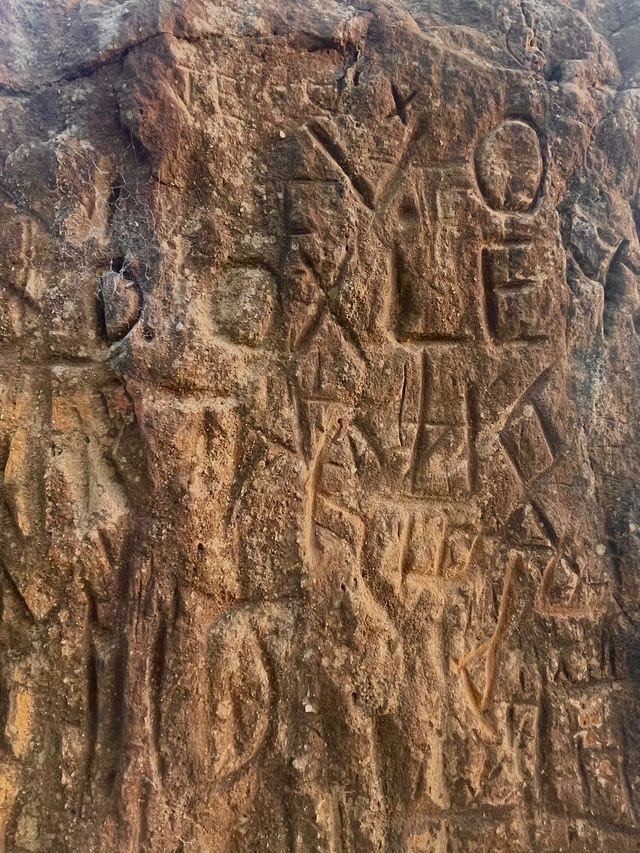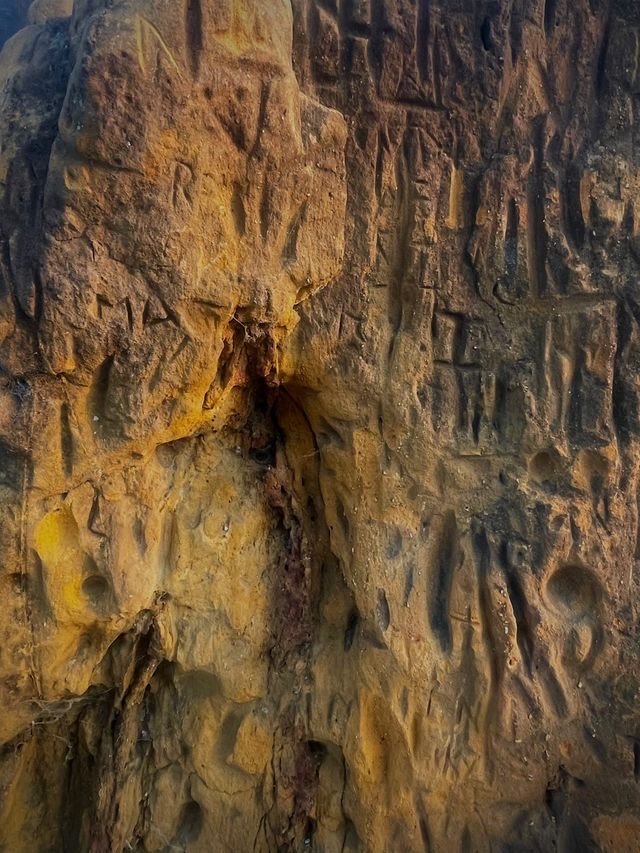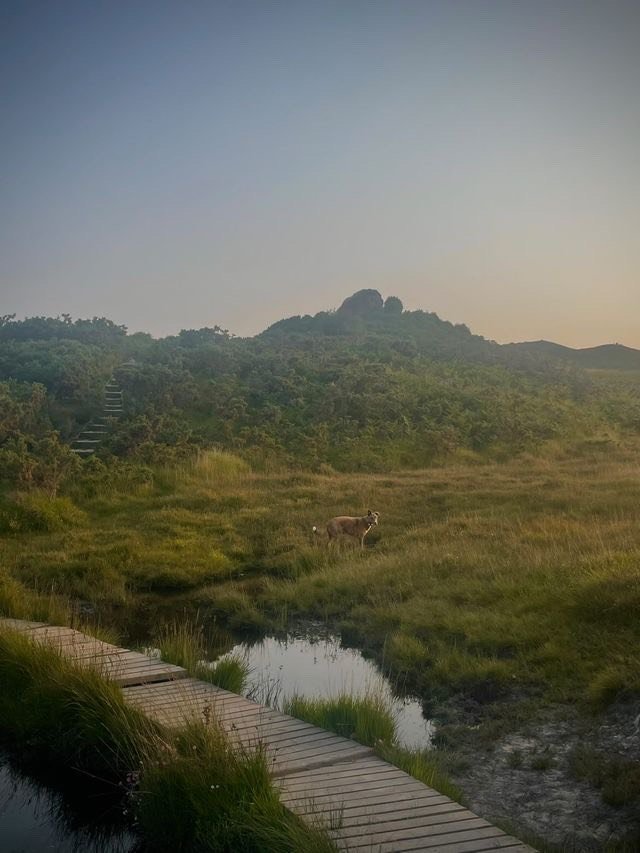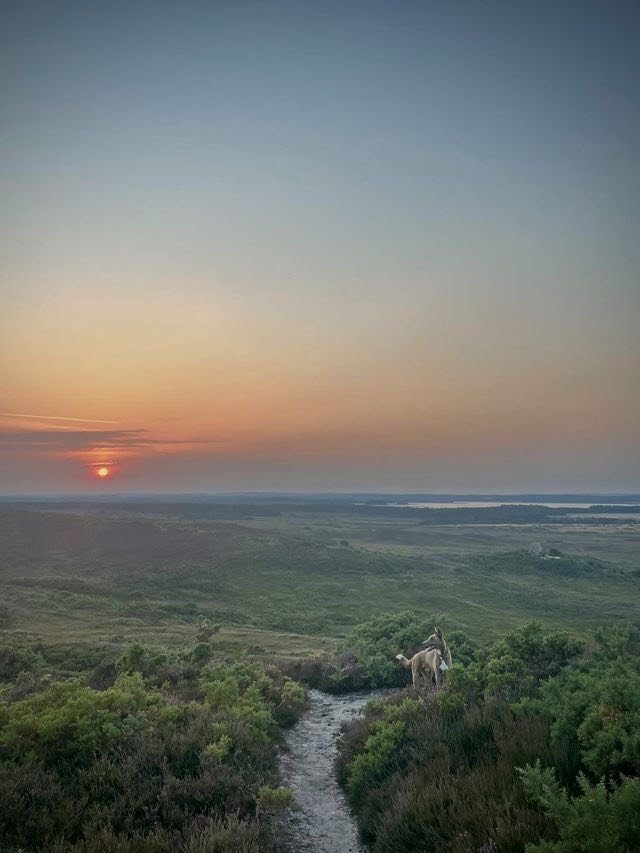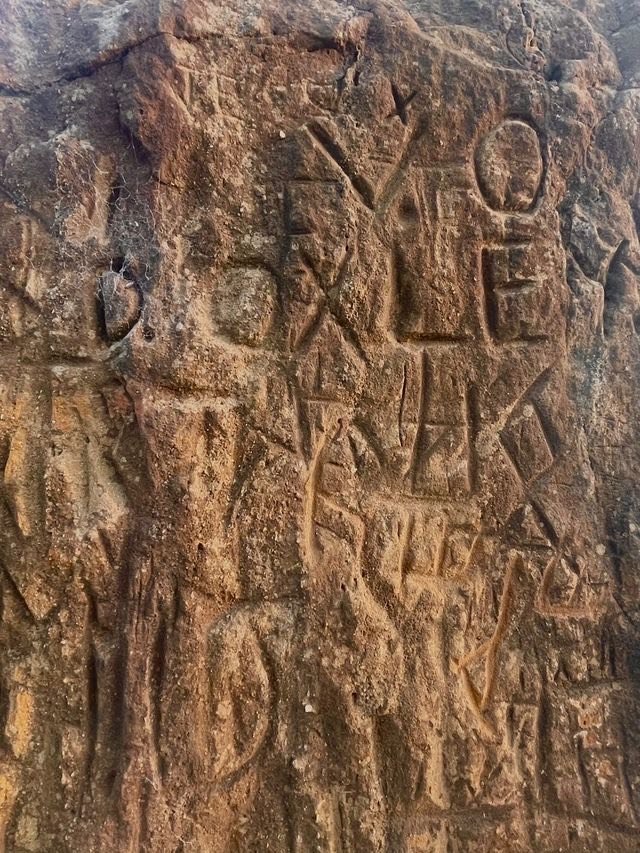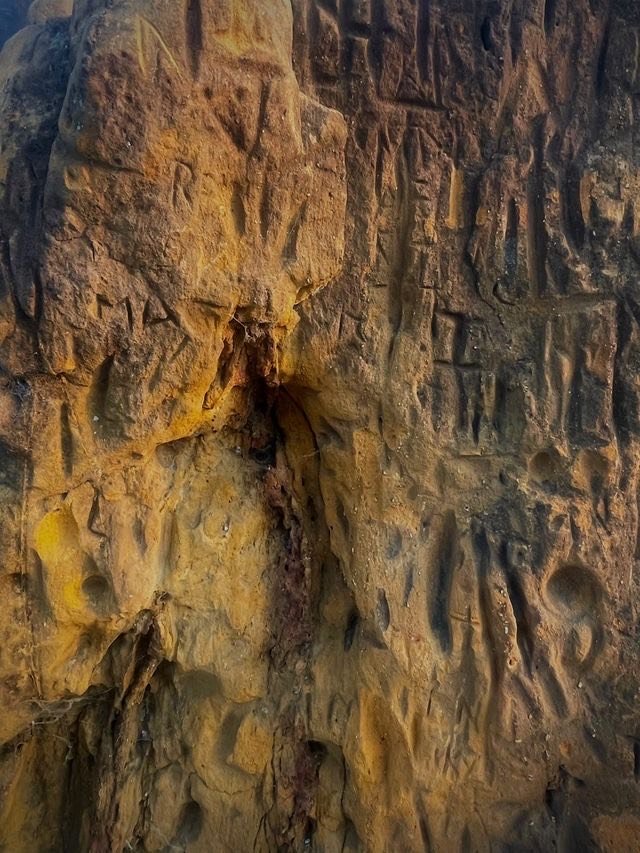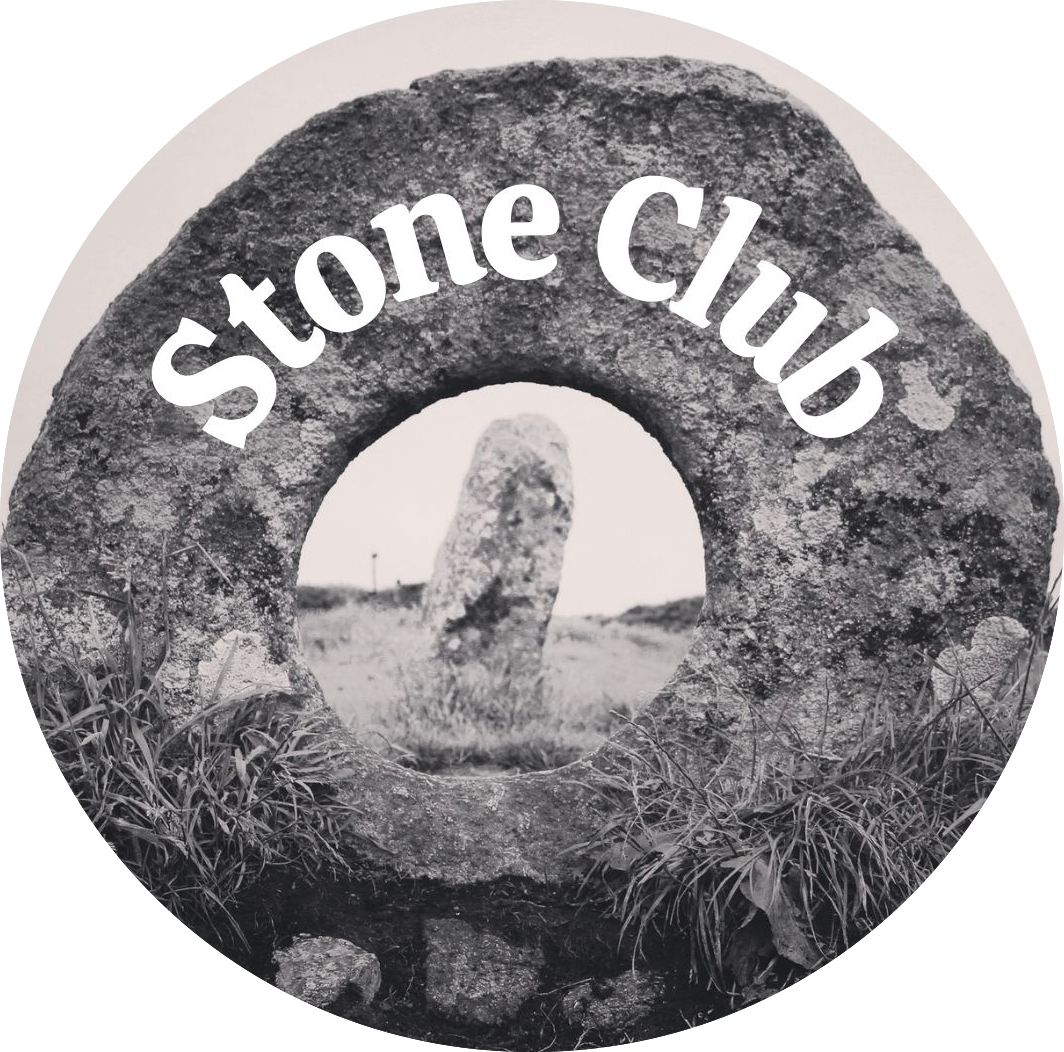Tom Beard (Member no: 1164)
Agglestone Rock
One day sitting on the Needles Rock of the Isle of Wight, whence, espying Corfe Castle in the distance, he took a cap from his head and threw it across the sea, with the intent of demolishing the structure
Rising above the peaty bogs of Godlingston Heath, Studland, is the imposing 20 foot high Agglestone, Devil’s Anvil or Devil’s Cap - a mysterious coppery-gold boulder of ironstone.
Local folklore purports 'that his Satanic majesty was one day sitting on the Needles Rock of the Isle of Wight, whence, espying Corfe Castle in the distance, he took a cap from his head and threw it across the sea, with the intent of demolishing the structure'.
The Dorset landscape is rich in Devil Lore giving his name to several natural features, such as the Devil's Armchair at Corscombe, The Devil's Spoon and Trencher at Iwerne Courtney.
Dorset folk thought it unlucky to refer to the Devil by name and had nicknames for him such as 'the old other one', the very old 'un', 'owld lad', 'old Scratt’ ‘old Nick' or old Harry'. (The most famous local landmark being Old Harry’s Rocks, though they could be named after a pirate.)
Agglestone Rock can be reached by a number of different paths - my favourite being a winding uphill route which cuts through an area of dense forest, ethereal at dusk. The path opens up onto the marshy Heath and the peculiar and powerful sight of the Agglestone rising up ahead on a conical hill from the deserted heathland.
We have been visiting this hidden landmark of the Dorset peninsula perennially for last 5 years- rambling there for high summer sunsets and hazy views down to Studland Bay and across to Little Sea and Poole Harbour.

